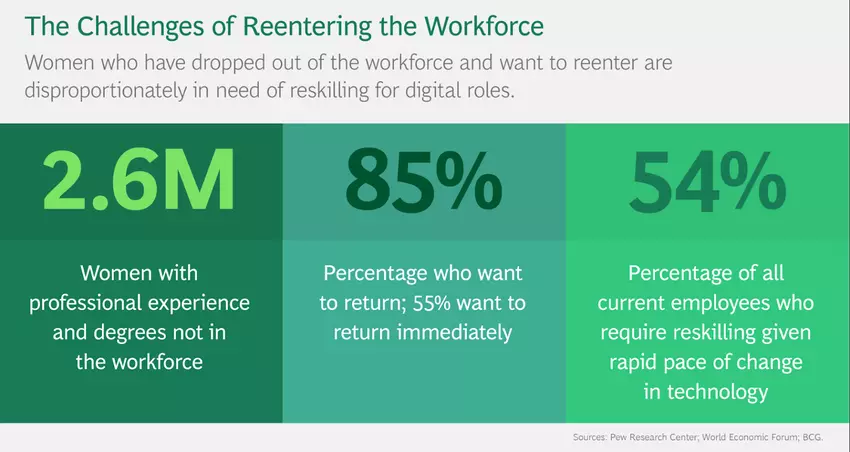
Women will be disproportionately affected by digital transformation. They are also currently under-represented in STEM-related professions. By 2022, at least 54% of all employees will require significant reskilling and upskilling. The half-life of a job skill today is about five years – and falling. For organizations around the world to thrive throughout and beyond the 2020s, they will have to invest in comprehensive training programs in digital and data and analytics for millions of workers, continually developing generations of agile learners with the latest skills. We need a reskilling revolution. Here’s how to make it happen.
Women hold 56% of university degrees overall, but just 36% of STEM degrees. Women make up only 25% of the STEM workforce. Just 22% of AI professionals and 12% of machine-learning experts are women. Reskilling can flip the odds and offer significant opportunities for women, particularly in the in-demand STEM roles. As administrative or clerical jobs mainly held by women begin to disappear, women can learn new skills that pay as much or more – and be retrained as the needs of organizations change. It is absolutely critical for leaders themselves to keep learning and remain relevant as the world of work changes.
Women drop out of the workforce at higher rates than men – but the majority want to re-enter. Peter Fitzgerald, president of Google Japan, recently shared with me the exciting details of a commitment by his company to provide digital training and retraining to 10 million people in Japan by 2022. Investing in comprehensive, carefully targeted training programs in digital technologies will give women with endangered jobs valuable skills and offer former workers a practical way to return. With a balanced workforce armed with the most important skills of the day, organizations can find success in the digital age of tomorrow.
2021auto19
The reskilling revolution can transform the future of work for women